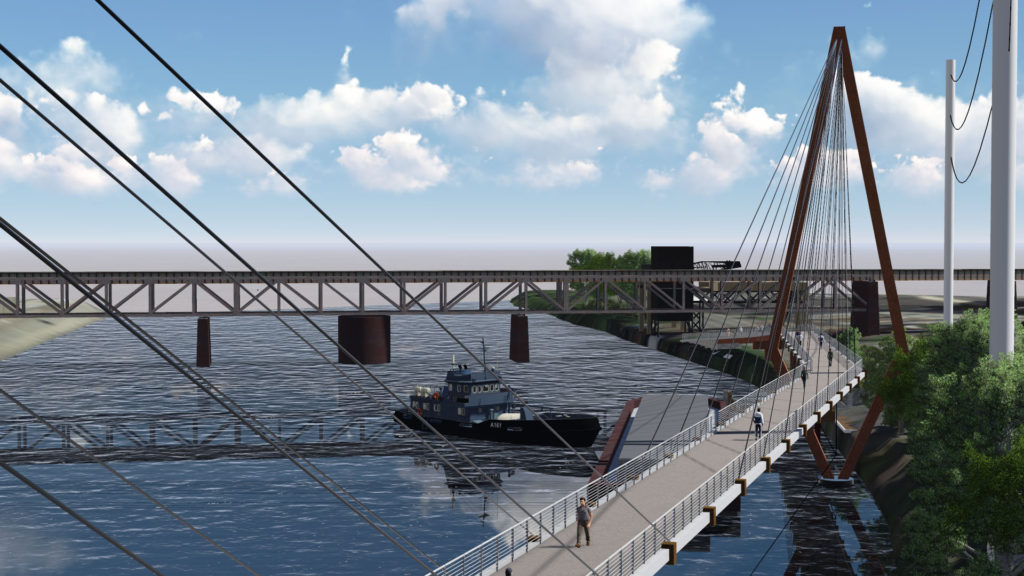
Photo: Daniel Paschall
We’ve heard from some our readers and social media followers wondering why the newest section of the Schuylkill River Trail doesn’t connect over the railroad tracks to Christian Street. Unfortunately, CSX forbids any new at-grade crossings (after allowing the two at Race and Locust Streets in 2007) and a bridge over the tracks is prohibitively expensive.
However, in the near future, that section of trail will connect to the other existing portions of the Schuylkill River Trail via the (yet to be built) Christian to Crescent trail segment. This connector is a large capital project that is not yet fully funded.
In the meantime, the public can use the pedestrian bridge that CHOP built with state funding.

Photo: Daniel Paschall
The Schuylkill River Trail is like a Brio train track. It’s built one segment at a time; the segments don’t always get laid down in sequential order.

Since the 1980s, the City of Philadelphia Department of Parks and Recreation (with help from the Streets and Commerce Departments) and the Schuylkill River Development Corporation (formerly called the Schuylkill River Development Council), have been stitching together funding from multiple sources to build the SRT from the Art Museum down to Fort Mifflin. The goal is to extend the trail to the confluence of the Schuylkill and Delaware Rivers and connect it to the East Coast Greenway as part of the Circuit Trails.
A significant portion of that 8 mile length has been constructed, but in “Brio” like sections.
- 2004 – MLK Drive to Locust Street
- 2011 – Race and Locust St. gates
- 2012 – Gray’s Ferry Crescent
- 2012 – Bartram’s Garden Trail
- 2012 – Connector Bridge
- 2014 – Schuylkill Banks Boardwalk
- 2017 – Bartram’s Mile
- 2018 – South to Christian
- 2019 or early 2020 – Schuylkill Crossing (swing bridge)
- 2024 – Christian to Crescent
Want to lend your voice to urging decision makers to do everything they can to help the region reach 500 miles of Circuit Trails by 2025, including the Christian to Crescent Trail? Please sign our 500 by 2025 Petition


This doesn’t answer whether the trail will actually connect to Christian St anytime soon, using a pedestrian bridge or something else?
A bridge is prohibitively expensive, but the floating boardwalk trail connector is not?
How does that math work out?
If it’s such a large capital project, why not include a crossing at Christian Street?
Good information. Thanks. It is the first time I have seen a rendition of the trail from Christian St south to the Schuylkill Banks Crescent.